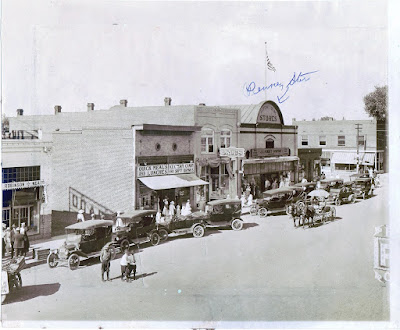San Luis Valley Colorado Discovery
Well, it was not
exactly discovered by Zebulon Pike but that poor fellow had a lot to do with
the history of the place. Originally it belonged to the Utes and not much happened
then so we can skip over that bit. Then the Mexicans seemed to have an interest
in the area – I have a story about that from a very good friend and school
buddy, Dick Martinez – later if there’s space. Meanwhile back to Pike. It was
in Jefferson’s time that the following occurred.
Pike was a young guy
and a very very poor writer so I have decided to make up a story about the
occasion. As preamble I have to say that Pike and his band of hardy but poorly
equipped men had a very difficult time of it. He established over 50 camp sites
in the state, none of which have left a trace. He was eventually arrested by
the Mexican army for trespassing while camped by the Conejos River. He did however
get a very imposing mountain named for him. He, incidentally, had never seen
mountains higher that the gentle hills of the Adirondacks and he found it
confounding and puzzling to be confronted by mountains as high as 14500 feet.
He was looking for the
Red River, instead found the Rio Grande. To begin, a true bit, he started from
Wet Valley (look on your map for Westcliffe) which lies hard against the eastern side of the
lofty Mt. Blanca, one of the highest peaks in the lower 48 and the southern
terminus of the Sangre De Christo Range – part of what is often referred to
today as the Front Range, the eastern edge of the Rocky Mountains.
He and his men
struggled up through Medano Pass against enormous difficulties accompanied by
their trusty Mexican scout who had earlier assured them he knew the territory
like the back of his hand. They finally reached the top and were able to look
out to the west across the vast expanse of the San Luis Valley, the mighty sand
dunes lying below at their feet.
What
Pike saw
Pike gazed at the green
swath of trees that came out of the mountains far to the west, snaked across
the valley and then gently curved south.
He knew they marked the path of a large river which he assumed was the
Red River.
He called to his scout,
“Hey Jose, Is that the Red River?”
Jose
saluted and said, “No senor general, that is the Rio Bravo, I think.”
Pike
ruminated a minute or so and said, “I’ll write this down. I’m calling it the
Rio Grande.” Turning to Jose, “Sound good to you?”
Jose was as tired as
the rest and not about to argue. “Si senor general, muy bueno.”
Then Pike pointed and
asked, “Jose, what are those trees along the river called? There sure are a lot
of them. Don’t seem to be much else.”
“Si, general, they are
Alamo arboles. I think you say cottonwoods.”
Pike looked confused
for a moment, “Yeah, arbol – tree. Okay, I’m going to call that place down
there where the river turns south “Alamosa.” I bet there will be a nice little
town down there some day.”
And so there was. It’s
where my mom and dad and two sisters moved in 1920 and where my dad opened a J.C.
Penney store.
John
Hood Senior’s new store – 1920
Pike
and his boys went on down into the valley and made camp about 15 miles south of
where the town of Alamosa would stand to the Conejos River. I’ve camped there and
my friends and relatives have fished on that river frequently. Menkhaven is up
the Conejos – nice cabins.
That
camp or crude fort made from cottonwood poles is where the Mexican Army
arrested the lot. People in that area have tried to reconstruct what that fort
might have looked like – tourists, you know. It’s near Magote where the wind
blew down a fence a few years back.
A few
miles east of where Pike camped is the oldest town in Colorado, San Luis. Near
San Luis in a remote setting is a relatively new church, the most beautiful
building I’ve ever seen. Ted Turner owns most of the land east and south of
this area and lets the local Latino population of San Luis gather wood in his
private forests as they have done for centuries.
Dick
once asked me when my dad had come to Alamosa. I proudly told him “Way back in
1920. When did your folks come?” He said his aunts in San Luis had some things
that indicated they came in the 1500s with the Conquistadors.


